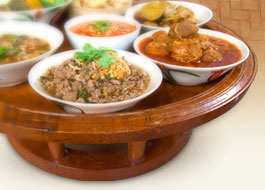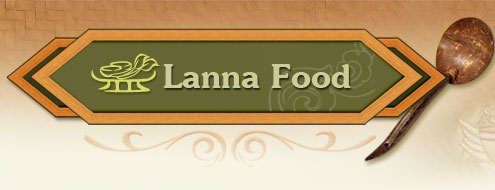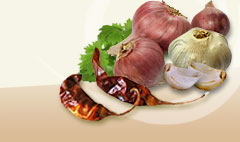Dill |
|
|
 | Anethum graveolens L. ExH |
|
| |
 | Umbelliferae |
|
| |
 | Dill |
|
| |
 | Phak chi duean ha, phak chi (Northern) (Rattana Phromphichai, 1999, p. 1881, 2889) |
|
| |
 | A small plant, 2-3 ft. high, erect, parvifoliate, yellow seeds like rice with husk but smaller, Native of the Mediterranean Region. Seeds are called thian khao plueak or thian wan (Wut Wuthithamwet, 1997, 238), and also thian klaep or tian klaep (Rattana Phromphichai, 1999, p. 1881, 2889) |
|
| |
 |

No information available.
The plant has a nice aroma and is used to enhance the flavor of soup, meat dishes, sauces, bread and desserts including liquor and pickles. (Phennapha Sapcharoen, ed., 2005, p. 117) Lanna people use the seeds in chili paste for lap. (Prathan Nanchaisit, personal communication, July 3, 2007 ) Young leaves and shoots referred to as phak chi lao are eaten with namphrik, lap and yam of all kinds (Rattana Phromphichai, 1999, p. 2990; Prathan Nanchaisit, personal communication, July 3, 2007 )
|

Seeds are spicy sweet and fragrant so they are used as a tonic to encourage passing gas, to relieve stomach upset, weak pulse, restless sleep (due to bile problems). (Wut Wuthithamwet, 1997, p. 238) |
|
| |
 |
Phennapha Sapcharoen, ed. (2005). Ingredients for Thai Food,. Nonthaburi: Center for Text Development of Traditional Thai Medicine. (in thai). Rattana Phromphichai. (1999). Chi, Phak. InSaranukrom Wattanathamthai Phak Nuea (Vol.4,pp.1880-1881). Bangkok: The Siam Commercial Bank Foundation for the Encyclopedia of Thai Culture. (in thai). Rattana Phromphichai. (1999). Thian Klaep. InSaranukrom Wattanathamthai Phak Nuea (Vol.6,pp.2889-2990). Bangkok: The Siam Commercial Bank Foundation for the Encyclopedia of Thai Culture. (in thai). Wut Wuthithamwet. (1997). Saranukrom Samunphrai: Ruam Lak Phesatchakam Thai. Bangkok: Odean Store. (in thai). |
|
| |
|
|




